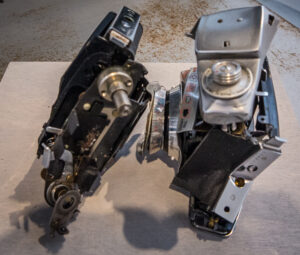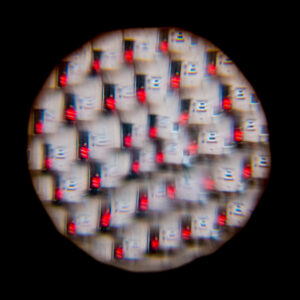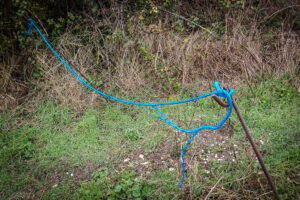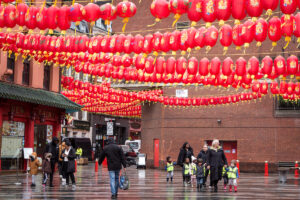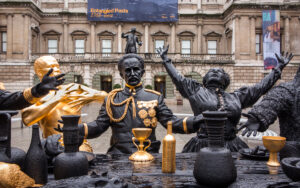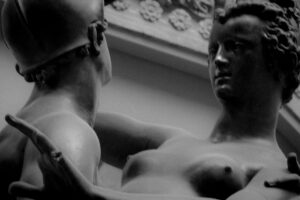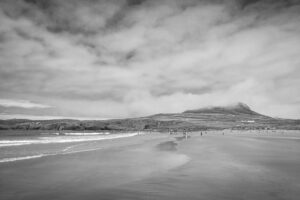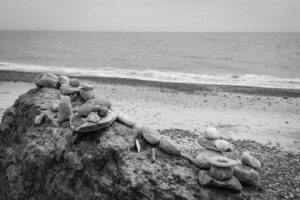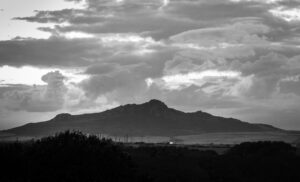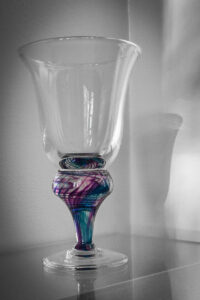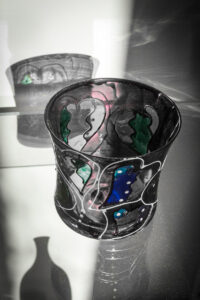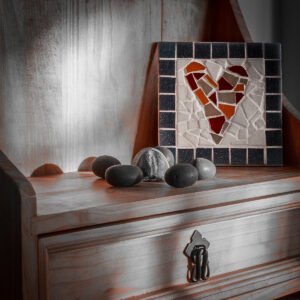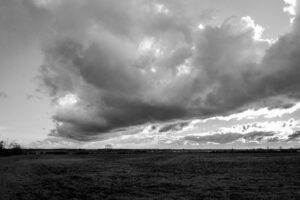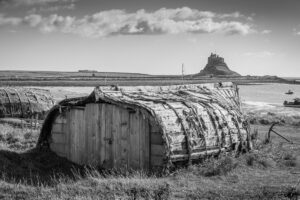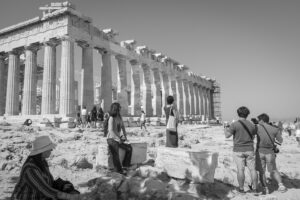Mining the Diaries – Reflection
Looking back to past travels taxes the fallible memory. Mostly, only high lights and low lights come into focus with the remainder blurred impressions. Photographs, diaries, souvenirs and accumulated ephemera help, of course, but they are still partial – snaps of smiling people are taken on sunny days. In trying to capture the essence of the experience of a holiday, a place, it is easy to sink into the armchair of nostalgia, the sentimental yearning for that which is irrecoverable, the past where you cannot go. Time is the barrier: you cannot travel back in years; and if you can return to the place time will have remade it.
My series Mining the Diaries is approaching the end, there are just two years and six trips to explore bringing the total to just over 100, stretching from 1968 to 2023. Each entry has been a pleasant and often exciting reminder of the travels (as I like to think of what have usually been holidays) I’ve been privileged to undertake. In writing each piece I’ve relied largely on my diaries and photographs and I hope each entry is an accurate reflection of how it was, or at least how I saw it. But each is like a fly in amber, frozen in time. I begin to have a nostalgic view of the places described, a sense of how I want them to be, and indeed perhaps that is how some still are, though development and ‘progress’ will have changed most and many will have had their sense of place lost to the surge of tourism. As I look back at them questions about how they have changed come to mind. Has the modest apartment in Tossa de Mar been submerged under a rash of hotel development? Do crab boats still go out from the beach at Sheringham? Do ponies still drive carousels in Brittany? Is the Crown Range Road in New Zealand still unsealed? What is life like in Cuba now that Fidel Castro has gone? Has the charm of Ano Perithia been eroded by new development? What has happened to the people I photographed, the card players returning from a day trip to Boulogne, the wedding couple in Aigues Mortes, the children at the mosque in Aleppo, how have their lives worked out?
I would particularly like to know the fate of those children, for nowhere can have changed as much as Syria.
We travelled to Syria with a group touring the country for nine days in September 2010. Our night stops included Damascus, Lattakia, Aleppo, Deir Ez-Zour and Palmyra; we passed through towns and villages on the way to visit Krak des Chevaliers, Ugarit, Saladin’s Castle, Aphamea, Hama, the Euphrates Dam, Rasafa, Doura Europos and the desert city of Palmyra. We spent three more days exploring Damascus independently after the tour group departed. As a group we had an ‘approved’ itinerary, but we were not sheltered from the disparities that existed nor from the problems that had beset the country – the uprising by the Muslim Brotherhood in Hama and its bloody aftermath in 1982 was mentioned when we were in the town – and outside scheduled visits we were free to explore by ourselves. The only warning we had was not to take photographs of government buildings, military installations and the enormous posters of President Assad. In the final three days we walked freely around Damascus pretty much ignored by the Damascenes. We had no inkling of what was to happen just a few months later.
What began as minor demonstrations against the repressive regime of President Assad in January 2011 became nation-wide mass protests in March. The uprising was met with police and military violence, massive arrests and a brutal crackdown, resulting in thousands of deaths and tens of thousands wounded. The uprising became an insurgency, then a civil war. Twenty-fourteen saw the rise of the so called Islamic State and there were four million refugees. The Battle of Aleppo began in July 2012, the minaret of the Great Mosque was destroyed in April 2013 and the city fell to government forces in December 2016. In January 2017 the Islamic state destroyed the facade of the Roman amphitheatre and a tetrapylon at Palmyra. By the end of 2023 the civil war had largely subsided into an uneasy stalemate. Hopes for regime change have largely died out and some regional governments, about 30 per cent of the country, may be willing to engaging with Assad. In 12 years of war: over a million Syrian civilians were killed; half of the Syrian population has been internally displaces or made refugees; and roughly 90 per cent of the infrastructure has been destroyed.
Looking back now to the friendliness of the people, the beauty of the country and the palpable sense of history, the destruction is almost too painful to contemplate. But it needs to be addressed.
In his new exhibition at Kettle’s Yard, Cambridge, Syrian artist Issam Kourbaj responds to the ongoing conflict in his home country. Titled ‘Urgent Archive’, through installation, sculpture, performance and works on paper Kourbaj explores the themes of destruction, loss memory and renewal. He mourns and honours the missing (dead, detained, refugees) and allows that desolation of the destruction to permeate the exhibition space through installations using repurposed material. The sense of it now being a hidden conflict is enhanced by the use of Arabic text, inaccessible to most visitors, in the art work. A changing installation of shelved objects from Syria addresses issues around land, severance and fragile transience.
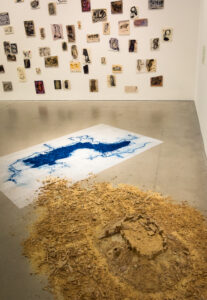
In the piece Abundant, No Abandoned, Kourbaj uses powdered pigment to depict the area of the lost cities, where we had a leisurely visit to the Monastery of St Simeon, to suggest the extremes of what it might mean to live between abundance and abandonment, beauty and danger, life and death. Don’t Wash Your Hands: Before the Quake, Aleppo City and Citadel, made from Aleppo soap, is one response to the destruction of the ancient city.
Seeds appear in many of the works and have metaphorical value relating to resilience and rebirth; one piece Despite the Fall is inspired by the Greek poet Dinos Christianopoulos, who wrote, ‘they tried to bury us; they did not know we were seeds’. In another work, ‘Is it from a grain of wheat that the dawn of life bursts forth; and also the dawn of war’, a seed taking root in these contested lands also has the potential to be used as a weapon of war. The International Center for Agricultural Research in the Dry Areas lost control of the vital seed bank in Aleppo when it was partially destroyed in the siege.
I cannot recognise the place I visited here. And there is no place for nostalgia in my reflections on Syria, only sadness, anger and a feeling of impotence.


